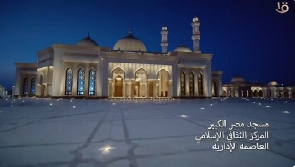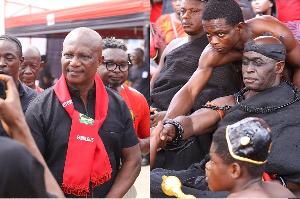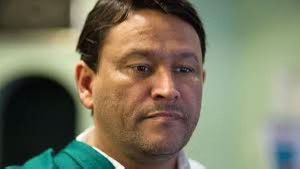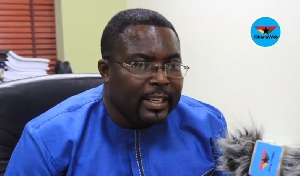Infrastructure is an important part of government expenditure and so it is curious when citizens critique government for investing in that area.
Over in North Africa, a section of the Egyptian population is expressing discontent with the decision of the Abdul Fattah Al-Sisi government to invest in a new giant mosque in the new city in Africa’s second most populous nation.
Even though the government celebrated the US$25.9 million new Islamic Cultural Center facility, poor Egyptians battling with rising cost of living and galloping inflation (over 30% in March) took to social media to protest the investment.
A Yahoo News report profiling the country’s economy said: Egypt is facing a deepening economic crisis. Its currency has lost half of its value against the dollar over the past year, causing inflation to reach its highest level in five years.
The country has also been selling state assets to Gulf investors to help plug a widening budget deficit, the report added.
Ghana's controversial National Cathedral project
In Ghana, the National Cathedral project has become a source of harsh critique against government in the middle of an economic crucnh that has forced government to seek support from the International Monetary Fund (IMF).
Issues of corporate government breaches and financial improprirty on the part of some members of the Board of Trustees has not helped matters.
Meanwhile, the project has stalled since early 2022 due to lack of funds whiles government has failed to also allocate funds from the state kitty to the project as a result of strict opposition by the Minority Caucus in Parliament.
Why spend on lavish project amid economic headwinds?
Some of the critical remarks posted online included one by a Facebook user who said:
"Overspending, insanity and waste of money. The tallest pulpit, the heaviest chandelier and people can't find anything to eat. Sell this chandelier and pulpit and the whole mosque if this will help solve the problem."
For yet another critic, it was worrying that the facility was closed for nine months, open for three months so a hundred people can use it, then it is closed again.
A third spelled out the economic difficulties that government chose to sidestep to spend on the giant project.
"Well, what should we do with people who can't find what to eat or young men who can't get married? It does not matter. We have the largest mosque, heaviest chandelier, and the biggest foreign debt that we will continue to pay till Doomsday."
About the lavish mosque poor Egyptians are protesting against
a. The facility costs 80 million Egyptian pounds (equivalent to US$25.9 million)
b. It is located in the country’s new administrative city which government is building to ease congestion in Cairo.
c. The facility, known as the Islamic Cultural Center covers over 19,000 square meters of land.
d. It is capable of hosting 107,000 worshippers at a time making it the biggest mosque in the country.
e. State media reported that it had the highest pulpit in the world, standing at 16.6m (54.5ft) and handcrafted from the finest types of wood.
f. It is reputed that main chandelier of the mosque is the heaviest in the world at 24,300kg (53,572lb), and the largest, with a diameter of 22m (72.2ft) and comprising four levels.
g. The new purpose-built city is situated 45km east of the political capital, Cairo.
????#مشاريع_مصر????????|
— مشاريع مصر Egypt (@EgyProjects) March 28, 2023
Egypt’s Islamic Cultural Center, Misr Mosque in the New Administrative Capital was established on an area of 15,000 square meters,
It has a large place for services, as well as a group of spacious and multi-storey garages, with a capacity of about 4,000 cars pic.twitter.com/EV7aYpj1kK
Watch the latest episode of The Lowdown below:
SARA

















